Apple A14 Bionic Explained — From iPad Air to iPhone 12
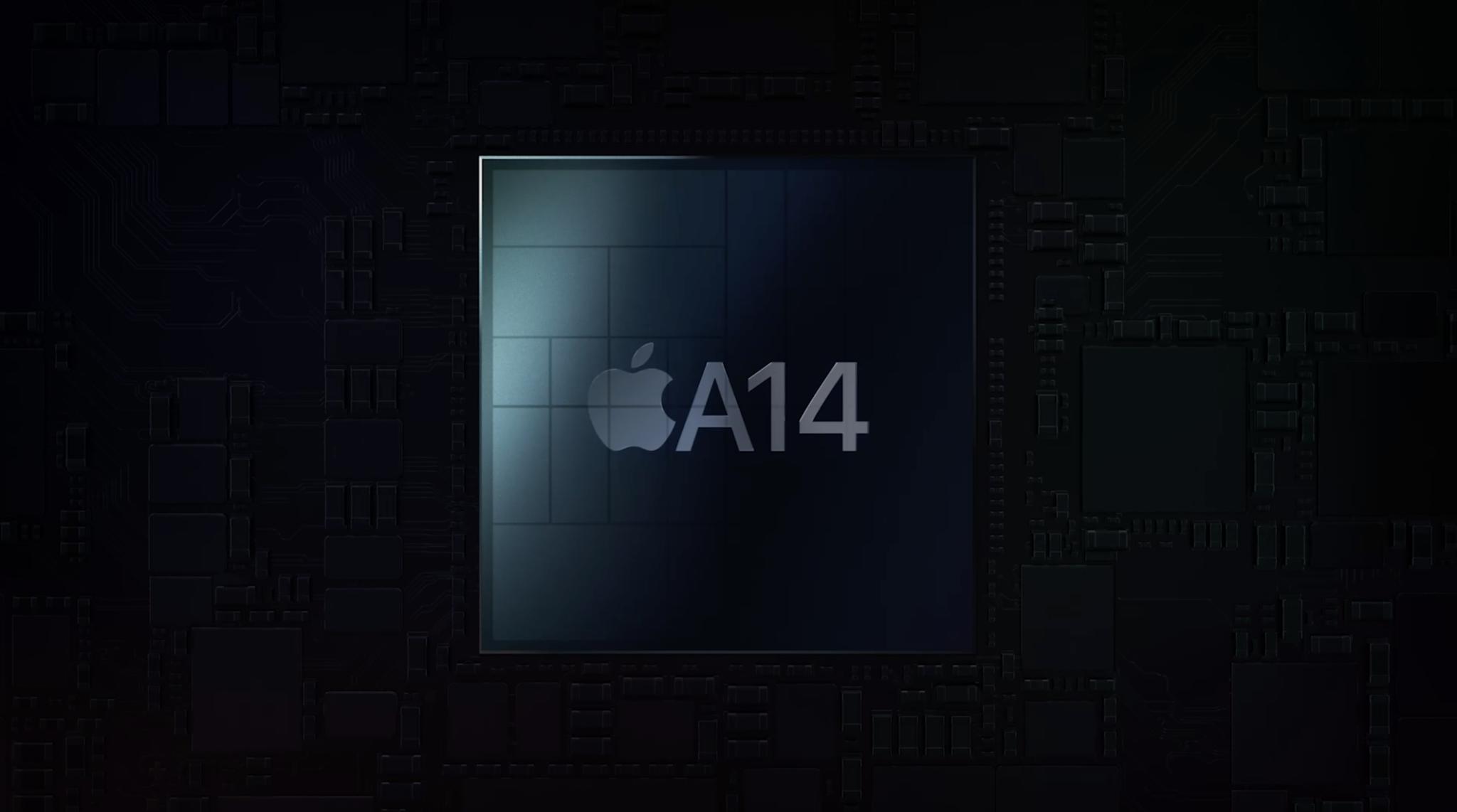
Apple has just announced the A14 Bionic system-on-a-chip for the brand new iPad Air, and whether or not that new Air excites you, that A14 sure as hell should, because it's almost certainly going to be the exact same chip we're getting in this year's iPhone 12 as well. And the same IP generation we'll be getting with the first ever Apple Silicon Mac.
(Yeah, you knew there was a reason Apple only teased us with the Air for now but isn't actually letting us get our hands — and our favorite geeky benches — on it until next month.)
Still, we already know quite a few things about it. More than you might think.
A-volution
As much as we all may want new iPhones and want them yesterday if not sooner, it's kind of fitting this wretched, worse than Game of Thrones Season 8 of a year, prompted Apple to announce the A14 with the iPad Air instead. Nostalgic even. Given a decade ago this year, Apple debuted their first-ever branded silicon with the A4 inside the original iPad. A full 6 months before iPhone 4 got it as well.
Since then, Apple's Vice President of silicon, Johny Srouji, has become a senior Vice President. The A-series has gone from 32- to 64-bit, from licensing ARM and Imagination designs to licensing architecture and making their own custom cores. From secure enclaves to neural engines. And from literally zero to shipping over 2 billion chips.
(Silicon chips… not like barbecue or salt and vinegar… though… that's probably how Intel is feeling right about now...)
Thats' largely because Apple isn't and doesn't have to act like a merchant silicon provider. And A14, in both the new iPad Air and iPhone 12, is the perfect example of that. I'll get to the specifics in a not-at-all-thermal max minute but this part is important to understand.
Master your iPhone in minutes
iMore offers spot-on advice and guidance from our team of experts, with decades of Apple device experience to lean on. Learn more with iMore!
One client, one job
Apple doesn't have profit and loss on selling chips, they don't have to balance the competing demands of multiple buyers building very different devices, and can work multiple years out with the other teams inside Apple, from hardware to software engineering, industrial to human interface design. Yeah, even marketing.
That means it's not just that they only have one customer, they also only have one real job: to run iOS, and now macOS, and every app on those platforms, faster than anything else in the world.
Sure, some might push back on that and say well, with all the new devices Apple keeps rolling out, doesn't that mean the Silicon team now has multiple customers within Apple, like iPhone and iPad, Watch and AirPods, and now, soon, the Mac?
There, Apple's done something pretty canny. Not only have they been working for years on scaling iOS into everything from watchOS to tvOS, and bringing key characteristics of iOS to macOS, they've been working for just as many years, maybe more, to create a silicon architecture they can scale from the iPhone down into the Apple Watch and up into not just the iPad Pro but now, soon, the Mac.
The Apple Watch S6 system-in-package is getting the iPhone 11 A13 system-on-a-chip core architecture this year. Which is just… silly. Especially given how non-existent real wearable silicon competition is at this point.
Sure, the new iPad Air might not tickle the A14 ISP, or image signal processor, anywhere nearly as much as the iPhone 12 will, because it doesn't have the same camera system and most people simply don't use cameras the same way on iPads as they do iPhones. And, equally sure, the iPad Air will have a bigger thermal envelope than the iPhone, which will be better for the kinds of graphically intensive creative apps people tend to use more on the iPad than the iPhone. Things like 4K video editing.
So, yeah, maybe the ISP is a little OP for the iPad, or the maximum perf a little extra for the iPhone, and when these chips hit other products like the Apple TV or get scaled down for the Apple Watch, there'll be other trade-offs, but in general, the efficiency, the savings on time and talent by having everything so tightly integrated and aligned seems to really be paying off for Apple.
Because they're not doing what other chip companies are doing either, not just ramping up power draw or throwing in extra cores to brute force performance at the expense of efficiency.
They're increasing performance and efficiency, pretty much at the same power and pretty much in the same thermal envelopes.
So, how?
5 nanometer
Just like the A12 was the first 7 nanometer chip to go into production, the A14 is the first 5 nanometer chip. And if those sound like Hank Pym, like Ant Man and the Wasp, like Quantum Realm kinda numbers, well, not yet, but we're getting closer.
In fact, rumor has it Apple has bought out all of Taiwan Semiconductors Manufacturing Company's — all of TSMC's — 5nm capacity for now. Like, just no one else is going to get any, not for a while. And what that gives Apple and advantage in density.
A system-on-a-chip, an SoC, inside an Apple device like an iPad, especially like an iPhone, is space constrained. But going from 7 nanometers to 5 nanometers lets Apple get more transistors into that space. Up to 1.8x more, or around a 45% area reduction, based on TSMC's claims.
We'll have to wait for the die shots to see exactly how Apple's balancing that out, but we do already know the A14 packs 11.8 billion-with-a-b transistors. That's up from the A13's 8.5 billion. Or, you know, just over 3 billion more transistors to spend on existing compute engines and new feature sets.
Starting with the CPU.
A14 Bionic CPU
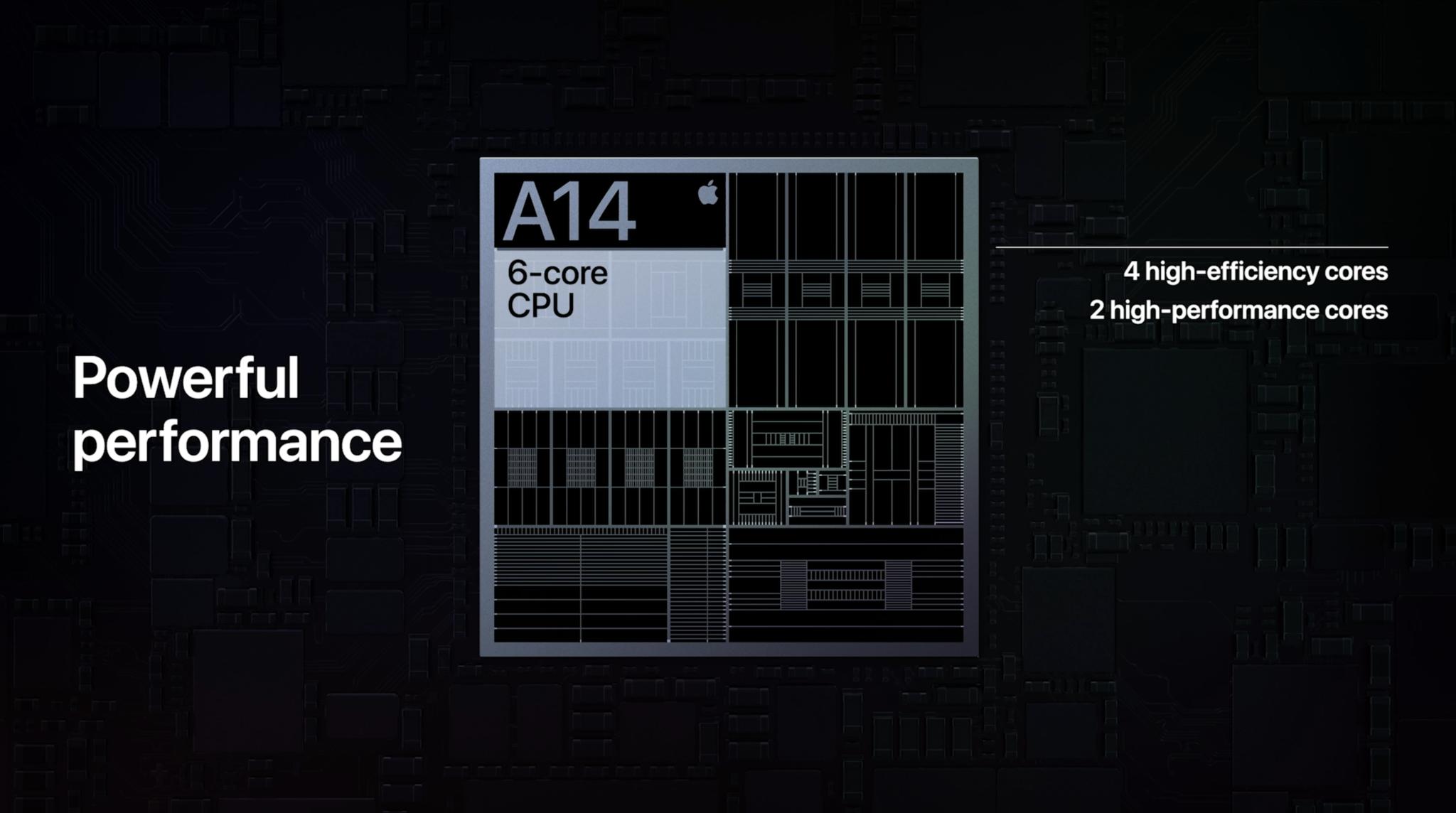
Back with the A10 Fusion in the iPhone 7, Apple introduced the idea of… people get snappish when I call them big dot little so I'll just say performance dot efficiency cores. Basically it had smaller Zephyr cores that could handle normal tasks without being so power hungry, and bigger… er.. larger Hurricane cores that could handle more demanding tasks but at the cost of bing more power hungry as well. But they were fused together, they had to work together, hence the Fusion name.
With the A12 Bionic in the iPhones 8 and X, Apple kept the efficiency dot performance architecture but ditched the fusion, so the quote-unquote big Monsoon cores and little Mistral cores could work separately or together as needed. Hence… well, not the Bionic name. Someone on the silicon team was just obviously a huge Steve Austin fan.
(Not the Stone Cold one, the Six Million Dollar one… never mind, Wikipedia the show. But they've managed to keep that Bionic name going on 4 generations and years now, talk about your architecture branding efficiency.)
Anyway, A14 Bionic has a 6 CPU core, with two high performance Firestorm cores and four high efficiency Icestorm cores. And yeah, Apple's continuing their habit of making any given generations efficiency cores much more performant and performance cores much more efficient. Because those things are inextricably linked.
Apple's said the A14 is 40% faster than the A12, and doing some quick back-of-the-keynote math, the A13's Lightning and Thunder cores were 20% faster than the A12's Vortex and Tempest cores — though I think AnandTech claimed Apple was underselling that a bit… — but anyway, divide by zero, carry the one — that should make the A14 again 16% or so faster than the A13.
Which will no doubt make the Moore's Law is dead-heads among us eye-roll so hard, but hey, Apple's still kicking away at that Moore corpse as much as anyone.
Just using that very wide architecture, optimizing it for efficiency, and keeping those cache sizes just extra, extra generous, while doing it.
A14 Bionic GPU
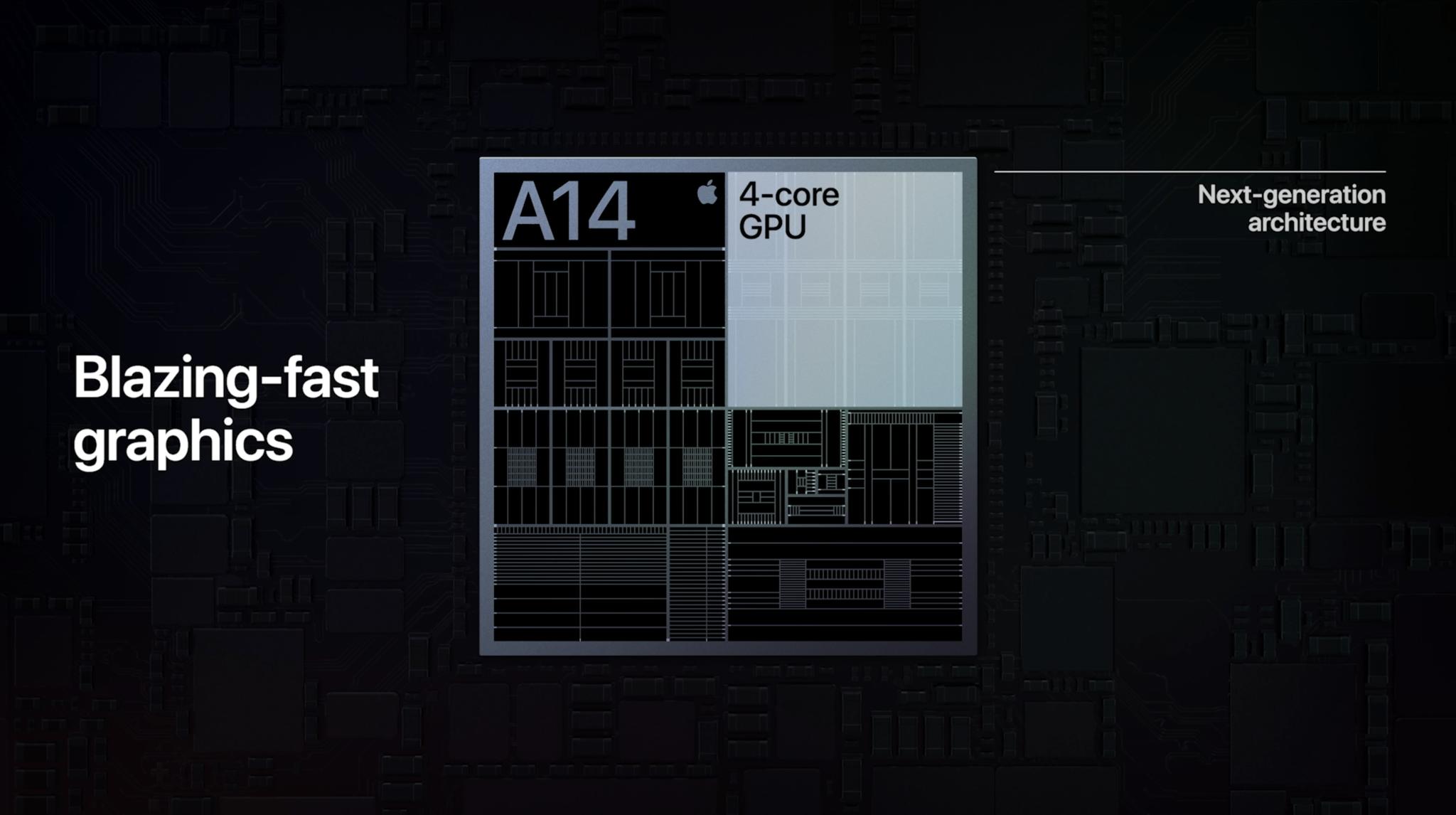
More recently, Apple's started making their own custom GPUs as well. With the A14, it's a 4 core graphics engine, which they say is 30% faster than the A12. And the A13 was 20% faster than the A12, so, again, "seatec astronomy" that math, and we get 8% over the A13. Which, legit, isn't as much as the CPU gains, but I also have a sneaky suspicion Apple is leaning even more heavily on other elements of their custom silicon here.
But, first GPU things first. The A14 maintains Apple's focus on efficiency. They want to be able to deliver most tasks, most of the time, at the lowest voltage and frequency, but still be ready to ramp up, to spike even, if and when you need it.
That lets them preserve as much battery life as possible while also providing really good sustained and peak performance.
And, I think the whole approach is something a lot of people are looking, no.. staring at awkwardly but unabashedly, to see how Apple scales up for Mac silicon, especially on Pro and Desktop machine and, of course, Pro desktop machines.
A14 Bionic ANE & AMX
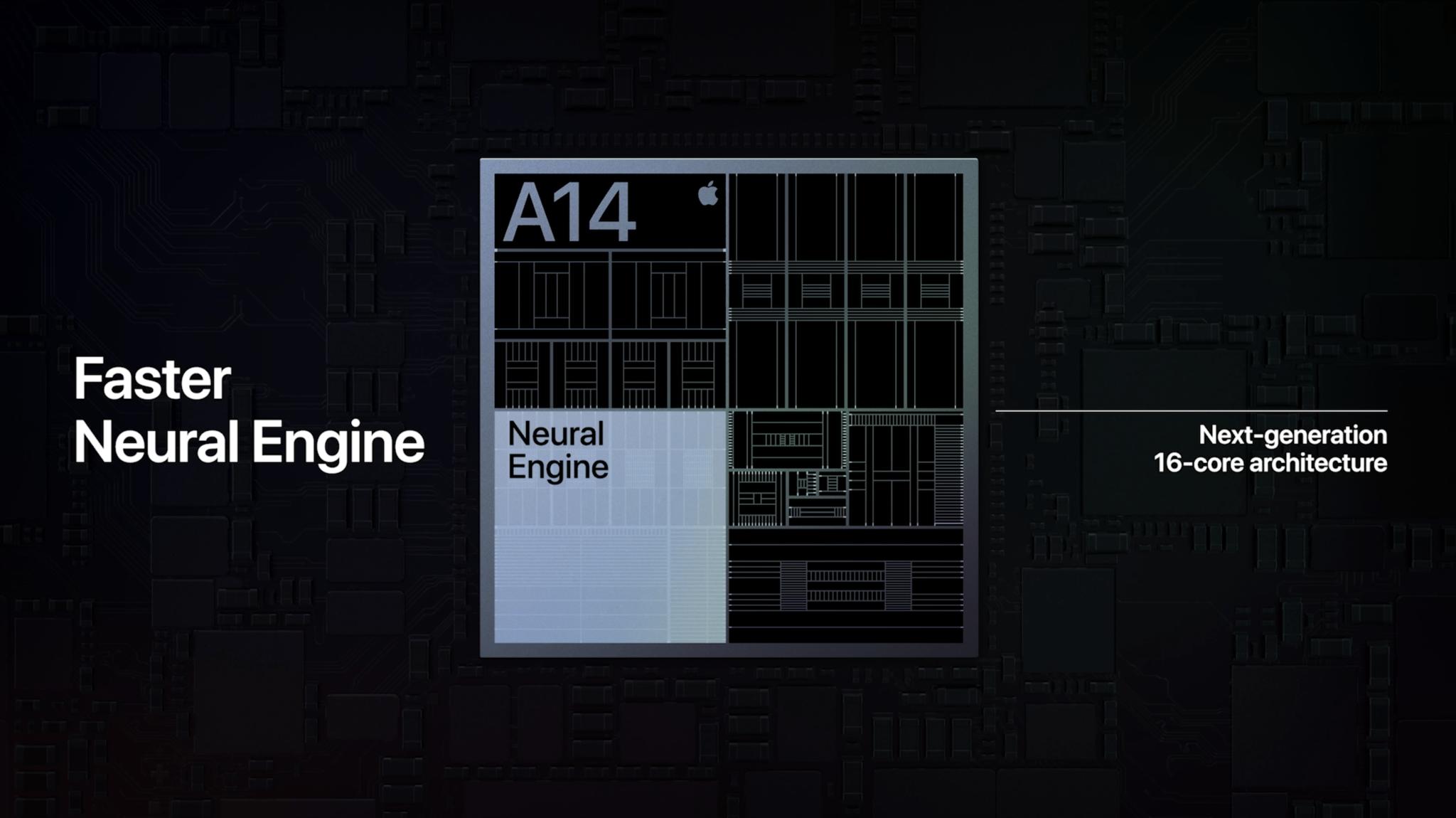
Back in 2017, Apple introduced their first ANE, or Apple Neural Engine, as part of the A11 Bionic. It's… sort of showcase feature was Face ID, the ability to scan facial geometry and figure out if you were you, even if the exact way you styled yourself varied day to day, even during the day.
It was something that sort of showed how Apple silicon interfaces with the rest of the company, coordinating with the hardware team working on the TrueDepth cameras and the software team working on the algorithms, two, three years before the feature ever hit the stage. Literally putting AI into the chip well before people were accusing Apple of missing out on buzzword style AI completely.
That original proto-neural engine in the A11 Bionic could do 600 billion operations per second. This new Neural Engine in the A14 Bionic, which seems to be doubling as fast as all of our shelter-in-place sour dough starters, is now up to 16 cores and 11 trillion operations per second.
That's twice as fast as the 8 core ANE's found in both the A12 and A13.
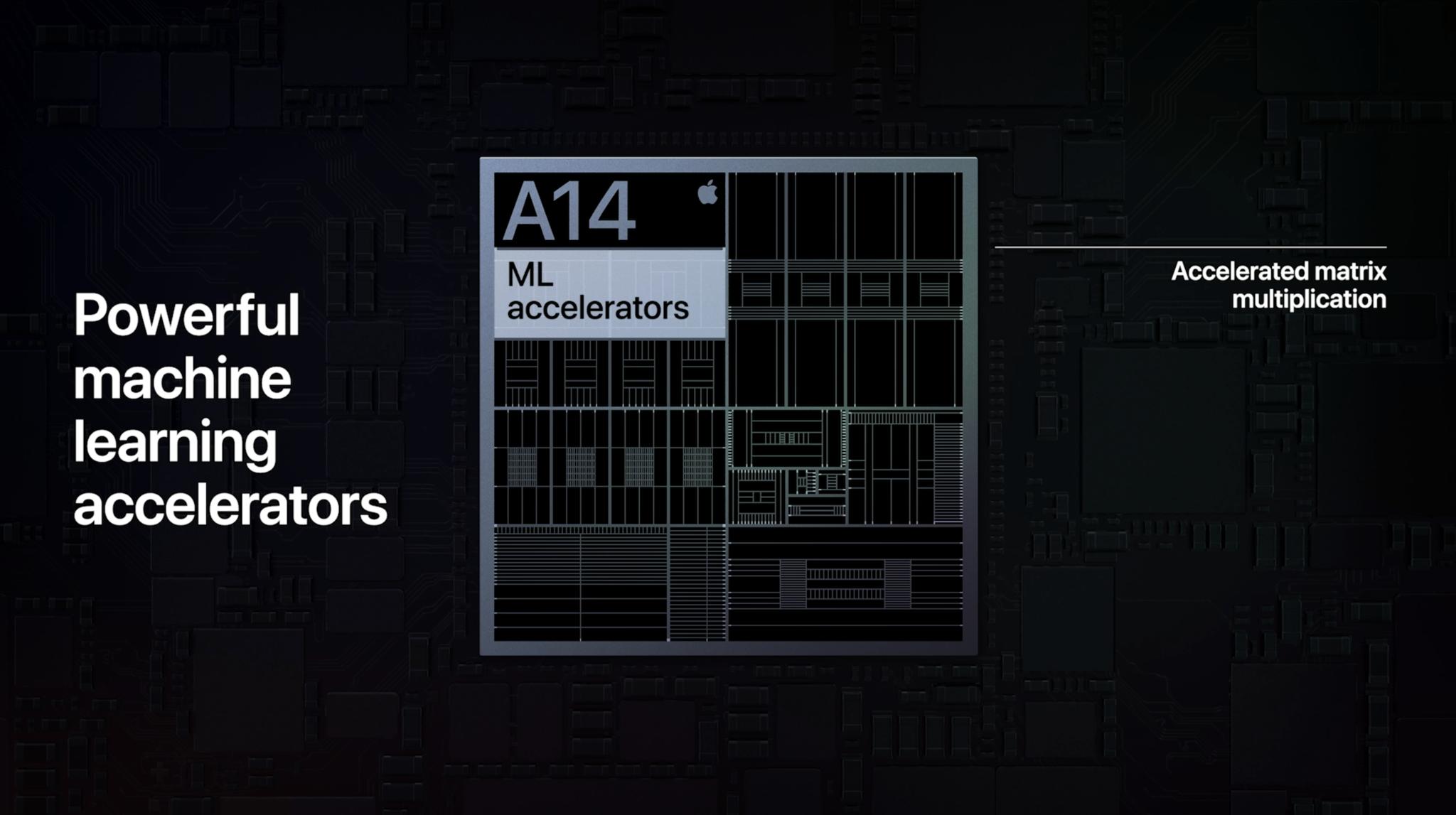
But Apple has also been optimizing the entire system on a chip, the entire SoC for machine learning, including the CPU and GPU, and starting last year, including new custom accelerators, called AMX blocks, for accelerated matrix multiplication, something frequently used in machine learning.
Last year, for these kinds of operations, Apple said it made the A13 6x faster than the A12. This year, they're saying it makes the A14 10x faster than the A12. So… plus.. 4x faster. Yeah, math is why I never got a sour dough starter… started…
A14 Bionic IP Blocks
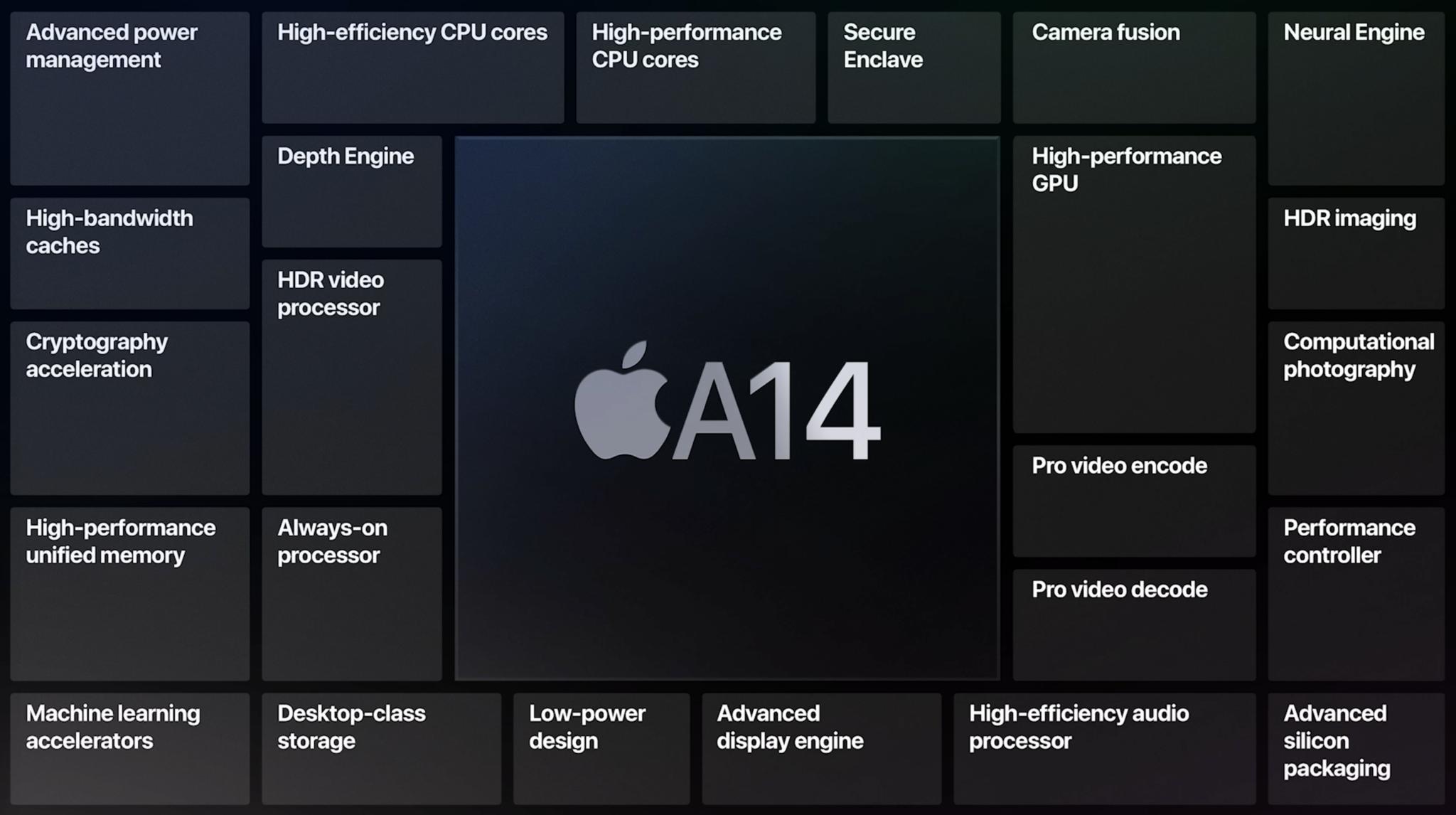
A14 Bionic really just means the next generation of pretty much all of Apple's silicon IP. And yeah, they use IP to refer to cores and blocks in silicon as well, I guess because so many other companies not named Apple literally license them out as IP.
And Apple's philosophy, their MO so to speak, seems to be moving the whole chip forward, all the IP forward, every generation. Year over year, to leave no corner untouched.
A lot of that is informed by the silicon team seeing what kind of apps people are using, both Apple apps and App Store apps, what the OS, the operating system teams inside Apple are planning for the next few years out, and what sorts of apps and workloads seem to be coming onto the market, or they expect will be coming onto the market. The trends they're anticipating.
That's what results in things like beefy, beefy caches, but also things like the pro video encode and decode blocks, which the A-Series chips use to handle H.265 video — so well that Apple actually redirects it away from the Intel chips in current Macs and towards the T2 chips — variants of the A10 — with those blocks.
Also things like the performance controller, the secret sauce that figures out what to direct to the CPU, GPU, ANE, and other components, to get the best performance at the highest efficiency for any given task. And that new ML controller which does the same between the ANE, the AMX, and the main cores.
Also things like the custom storage controller, which makes sure the solid state chips aren't just performing as fast as possible, but are making sure every photo, every frame of video gets right and properly saved. Which doesn't sound like much until you hear people with other, even recent generation flagship phones complaining they're missing pics or dropping frames.
It's not as flashy as many of the more gimmicky things we see in big launch demos these days, but it's the kind of thing that helps real people avoid real problems and have just a better experience every day.
Same with things like making sure video encode and decode and video capture don't just perform but sustain, because if you can't record that 4K60 extended interleaved dynamic range for as long as you want, again without dropping a single frame, that feature simply won't be as useful for you.
Which is why, when we get numbers like 20% more performance but also 40% greater efficiency. That's not the result of just a process shrink or global lever being pulled. It's the result of touching all those corners, working on all those IP, shaving off a 10th of a point here, a half a point there. Of every tiny advance helping push the overall performance and efficiency forward — life by a thousand cuts, to totally mangle that cliche, because, again counter-intuitively, efficiency is ultimately performance.
Is A14 Bionic OP?
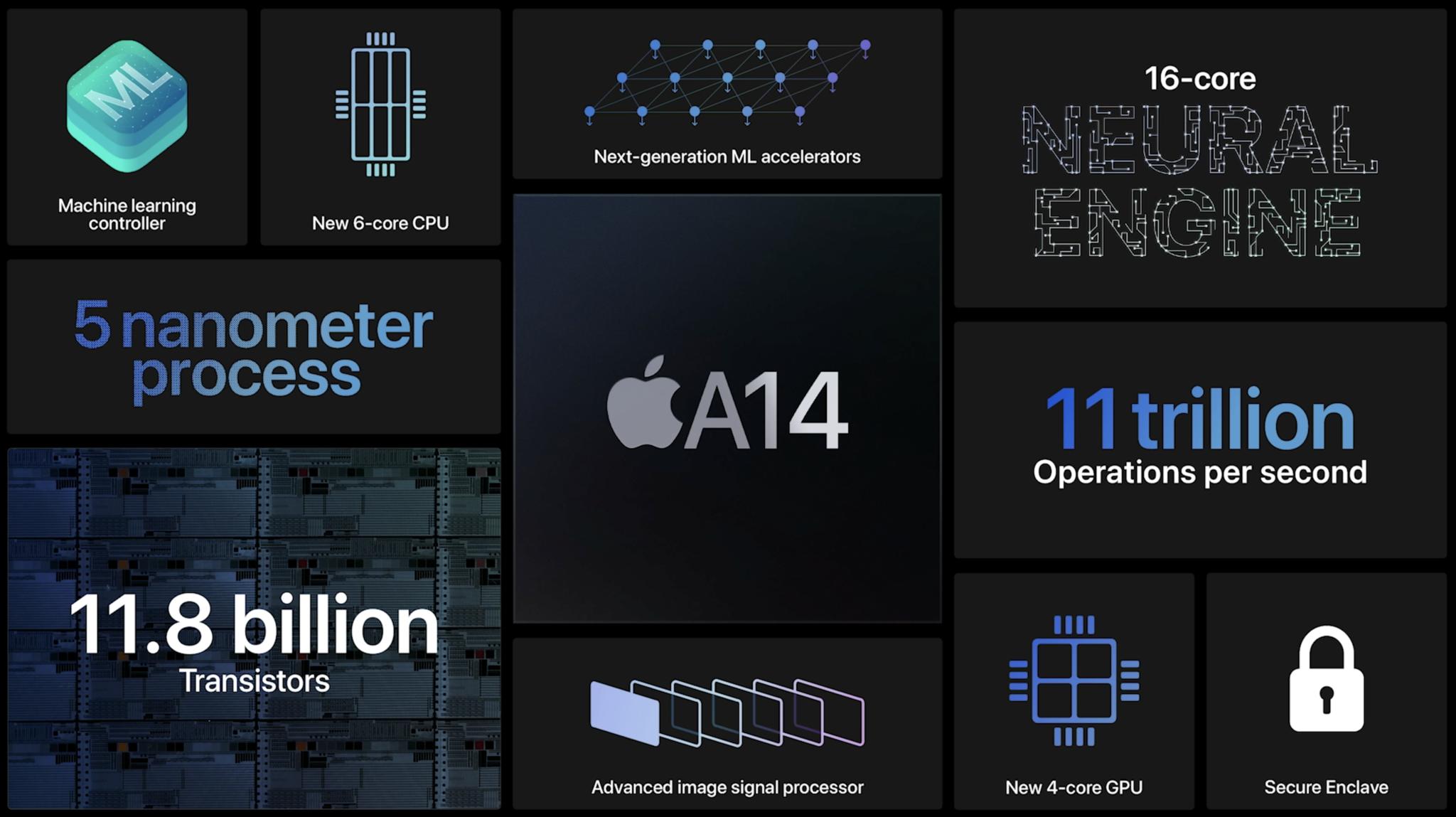
You know, every year, someone looks at the numbers Apple posts, or gets sucked up by Geekbench, and how the iPhone or iPad Air compares to or even beats this or that laptop, even MacBook, and wonders out loud if we really need this kind of performance on a phone or on a mainstream tablet.
Conversely, we get reviewers looking at brand new devices launching with older silicon, maybe a year, maybe more, and saying its fine, everything's fine, it does what it needs to do, so everyone should just stop worrying about.
And, yeah, those, both those things, are when I start screaming.
Because most people keep their phones for 2, 3, even more years, and their tablets for longer. So, it's less about how… ok… something scrolls on a brand new device the day it comes out and more how it will keep scrolling, keep performing in general, the next year and the year after that. When they've used it more and accumulated more cruft. When the operating system, the OS, has been updated with new features added that hit the silicon harder. And, honestly, that they can even keep getting updates for features and security both.
Apple has said very specifically that they're building a lot of overhead into the A-series chipsets not because of what they're doing now, this year with iOS 14 and iPadOS 14, and sure, macOS Big Sur, but because of what they're planning to do next year and the year after that, for around 5 years, and what they envision apps will be doing and what we'll want to be doing with them. Also, the updates we'll still need to be getting.
That way, we maintain as much of that day-one experience as possible on day 1000-and-one. And there'll be bugs and battery drains and all sorts of frustrations and failures along the way, and they'll get fixed, and broken again, but the overhead in the silicon means we'll have the absolute longest runway possible to get the absolute best value out of our iPhones and iPads possible.
Bottom line, that's what all of us should want from our devices and their SoC.

Rene Ritchie is one of the most respected Apple analysts in the business, reaching a combined audience of over 40 million readers a month. His YouTube channel, Vector, has over 90 thousand subscribers and 14 million views and his podcasts, including Debug, have been downloaded over 20 million times. He also regularly co-hosts MacBreak Weekly for the TWiT network and co-hosted CES Live! and Talk Mobile. Based in Montreal, Rene is a former director of product marketing, web developer, and graphic designer. He's authored several books and appeared on numerous television and radio segments to discuss Apple and the technology industry. When not working, he likes to cook, grapple, and spend time with his friends and family.
